Choosing the Right Dive Computer for Beginner Scuba DIvers
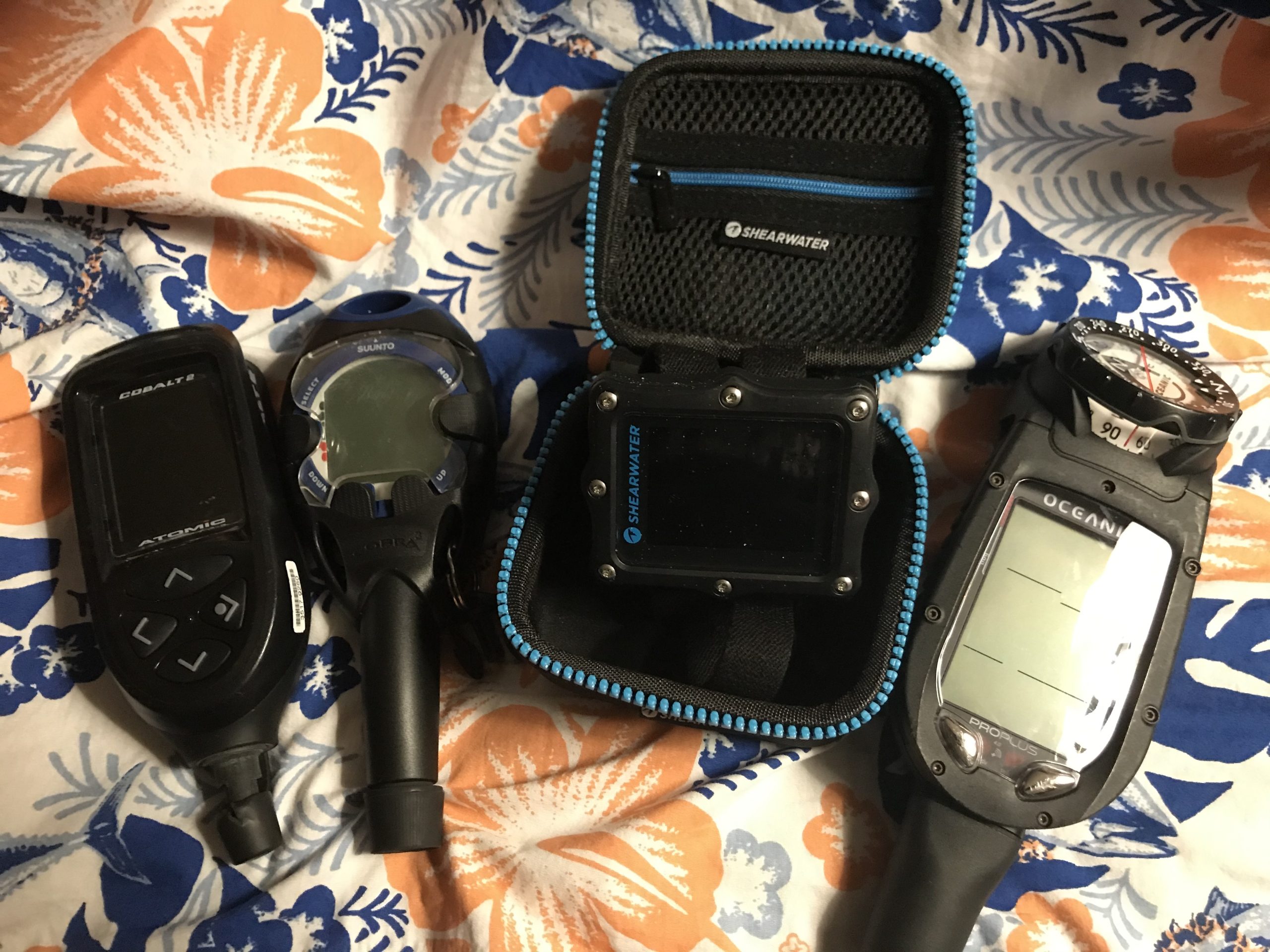
One essential tool that every diver should have is a dive computer. Many commercial dive boat operators won’t let you on the boat without a computer these days, they have become that important.
But with so many options available, how do you choose the right one? Let’s take a look at some of the basic features that you need to look for when trying to find the perfect dive computer for you. From understanding the basic features to exploring advanced functionalities, we’ve got you covered. So, let’s dive in and discover the key factors to consider when choosing your dive computer.
Understanding Dive Computers
When it comes to scuba diving, knowledge is power. Dive computers provide crucial information to ensure a safe and enjoyable dive. They have revolutionized the way divers plan and execute their underwater adventures. But what exactly are dive computers, and how do they work?
To put it simply, a dive computer is a compact device that tracks important data during a dive. It measures factors like :
- Depth
- Bottom time
- Ascent rate
- Decompression limits
By continuously analyzing all of this data, a dive computer can provide real-time information to divers, allowing them to make informed decisions about their dive profiles.
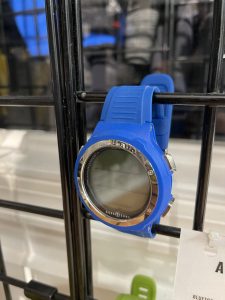
Depending on the type of computer you get, they can be a simple combination of a timer and depth gauge. In this basic form, they help divers track how deep they are, and how long they have been down. On the surface, they help divers track their surface interval so that they can plan their next dive. Before dive computers, divers had to calculate all of this manually using tables printed on plastic cards. Dive computers make it much easier for divers to stay within the no-decompression limits.
More advanced computers are connected to a hose leading to your first stage regulator. These computers will also track the amount of gas is left in your tank. These “air-integrated” computers give the computer more information to work with so they can help divers make more decisions.
Finally, some dive computers are wireless. These wrist-mounted devices talk to your first-stage regulator through a transmitter mounted directly on it on on a short hose. Wireless dive computers tend to me the more expensive option, although prices are starting to come down to the upper limits of the good air-integrated computers. Some divers don’t trust the wireless dive computers. Personally, I dive with one and yes, they do lose connectivity form time to time, they usually re-connect within 30 seconds or so.
Now that we understand the basics, let’s dive deeper into the key features to consider when choosing a dive computer.
Key Features to Consider
Air-Integrated vs. Non Air-Integrated
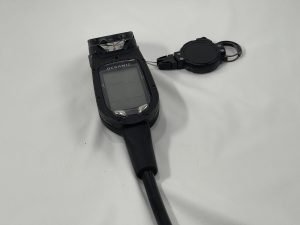
The first decision you need to make is whether you want air-integrated dive computer or not.
An air-integrated computer is any dive computer that can talk to your regulator. The connection between your computer and regulator will either be a hose, or a wireless transmitter. Many divers like air-integrated though because it allows them to get all the information they need underwater in a single glance. (time, depth, gas left) Additionally, air-integrated computers these days will allow the to download the gas pressure information for the entire dive. This means not only does your computer know how much gas you started with and ended with, most have software that can display a graph of your gas usage throughout the dive.
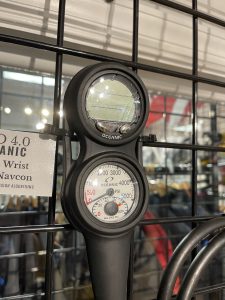
Air-integrated is not the end-all/be-all of dive computers. You can dive just fine with a non air-integrated computer. Most rental gear these days – including the gear you may have trained with, included a small “puck style” dive computer. They may be mounted above your submersible pressure gauge but they aren’t actually connected to the hose, they are just in a rubber frame. These dive computers still give you all the basic information you need, bottom time, and depth, but they don’t track your gas usage. This means they can’t alert you when you are getting low, and they can’t allow you to download your gas usage per dive. Still, they will help you track bottom time, and depths. They also still help you plan your next dive based on your surface interval and planned depth using the “plan” mode.
Display and Readability
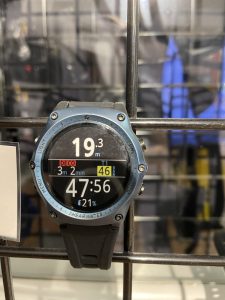
A clear and easily readable display is essential for underwater visibility. Look for dive computers with bright, backlit screens and large digits or icons that are easy to read in various lighting conditions. Many dive centers will have display models with all of the indicators turned on. Make sure you see where the things like the accent speed display is and that you can see it easily. If you can easily read the numbers and indicators on the surface, chances are good you will be able to do so underwater. If you have trouble reading the display on the surface, it will only get worse underwater.
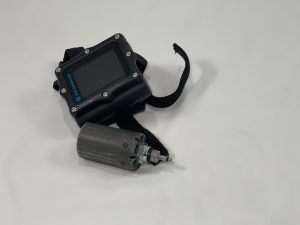
Nitrox Compatibility
If you’re planning to dive with enriched air nitrox, ensure that the dive computer is compatible with this gas mixture. Many dive computers offer Nitrox mode, allowing you to set the appropriate oxygen and nitrogen percentages. These days most computers, even the basic non-air integrated models handle multiple gases. As a new scuba diver, even if you aren’t yet Nitrox certified, you want to make sure that your computer purchase will still be a valuable tool to you as you grow your skills.
Additional Features to Look For
The features we’ve discussed so far are the really important ones to consider when starting to look at dive computers. Beyond these features though, there are other features to look for when selecting a scuba diving computer.
Dive Log and Data Storage
Consider dive computers with ample memory to store dive logs. Some devices even offer wireless connectivity, allowing you to transfer dive data to a computer or smartphone for further analysis and sharing.
This is not the same thing as the wireless we discussed above. For log information and configuration, most modern dive computers use Bluetooth. The better dive computers that implement Bluetooth will allow you to configure your computer using an app on your phone. Once you have it set the way you want, you upload the configuration to your computer. This is a much better interface for new scuba divers than the typical two-button interface most dive computers have.
If you are a new scuba diver then chances are good that you do not currently have an electronic dive log. If you choose to use the one that comes with your new dive computer, make sure that it has an export/import feature. As you dive you will inevitably move to a new dive computer. If your log is locked up in a proprietary format then you will leather lose all of your log info is you switch brands if you can’t export it.
I recommend starting with a manufacturer-agnostic electronic dive log like Mac Dive. Most dive computers work with it and it works on OSX, iOS, and iPadOS.
Alarms and Alerts
Look for dive computers with customizable alarms and alerts. These can notify you about ascent rate violations, decompression stops, low battery, and other important factors to keep you safe during the dive.
Once You Buy a Dive Computer, Learn to Use It
Once you have made up your mind which dive computer you want, and you’ve made your purchase, take the time to read the manual, set the computer up, and familiarize yourself with it’s operation. It doesn’t matter if you’ve bought the most expensive module in your local dive center, or the cheapest, the time to learn how to use it is sitting comfortably on your couch, not on the dive boat on the way out to your first dive with it.
- Spend time reading the manual
- Look on the Internet for videos from the manufacturer on how to set it up and use it in the water
- Check all the default settings and alarms to make sure they are set the way you want them.
Once you’ve spent some time figuring all of this out, you are ready to take your new dive computer into the water.
Wrap Up
Choosing the right dive computer is crucial for every beginner scuba diver. It doesn’t matter if you regularly dive in a quarry, off a dive boat, or a shore dive like the beautiful Blue Heron Bridge, you need to give careful consideration to the dive computer you purchase. By considering factors like display readability, nitrox compatibility, advanced functionalities, and personal preferences, you can find a dive computer that suits your needs and enhances your underwater experiences. Remember, a dive computer is not just a tool; it’s a valuable companion that helps you dive with confidence and stay safe in the water. So, take your time, explore different options, and make an informed decision.
Dive Confidently!